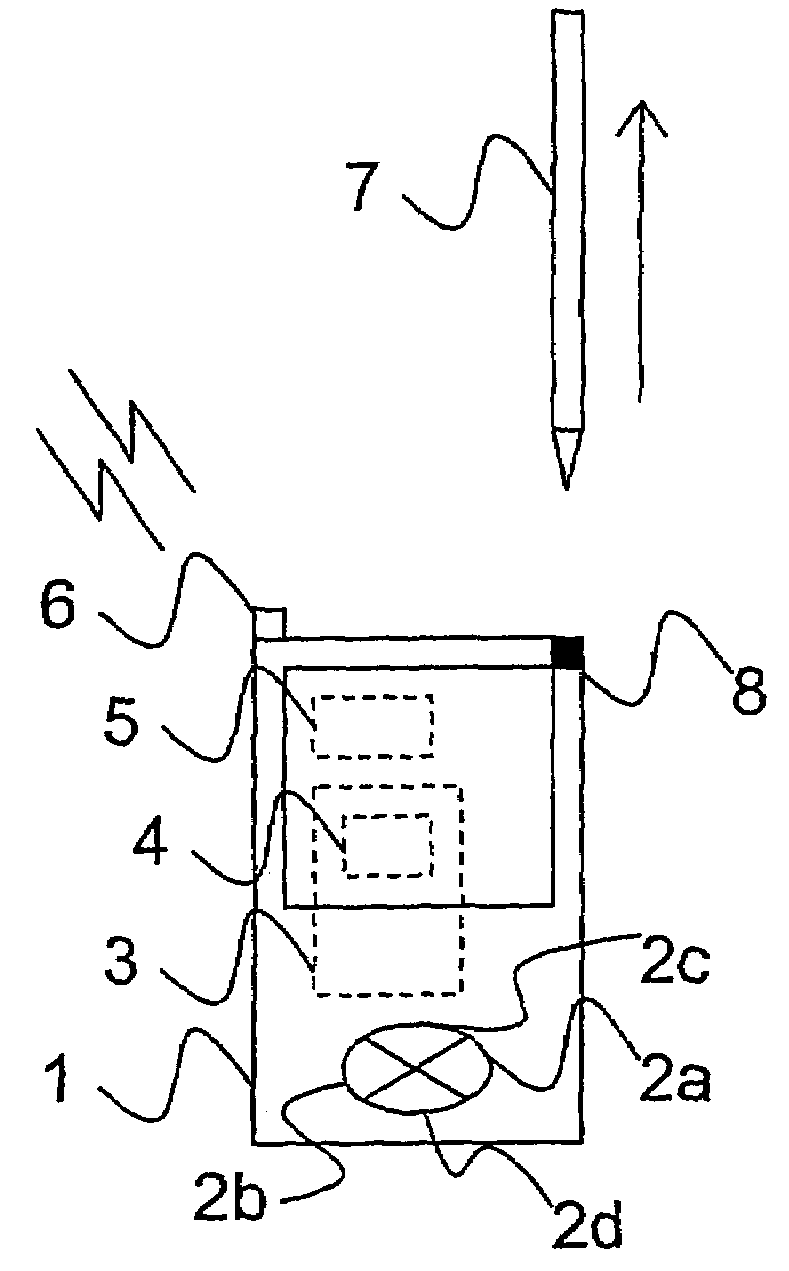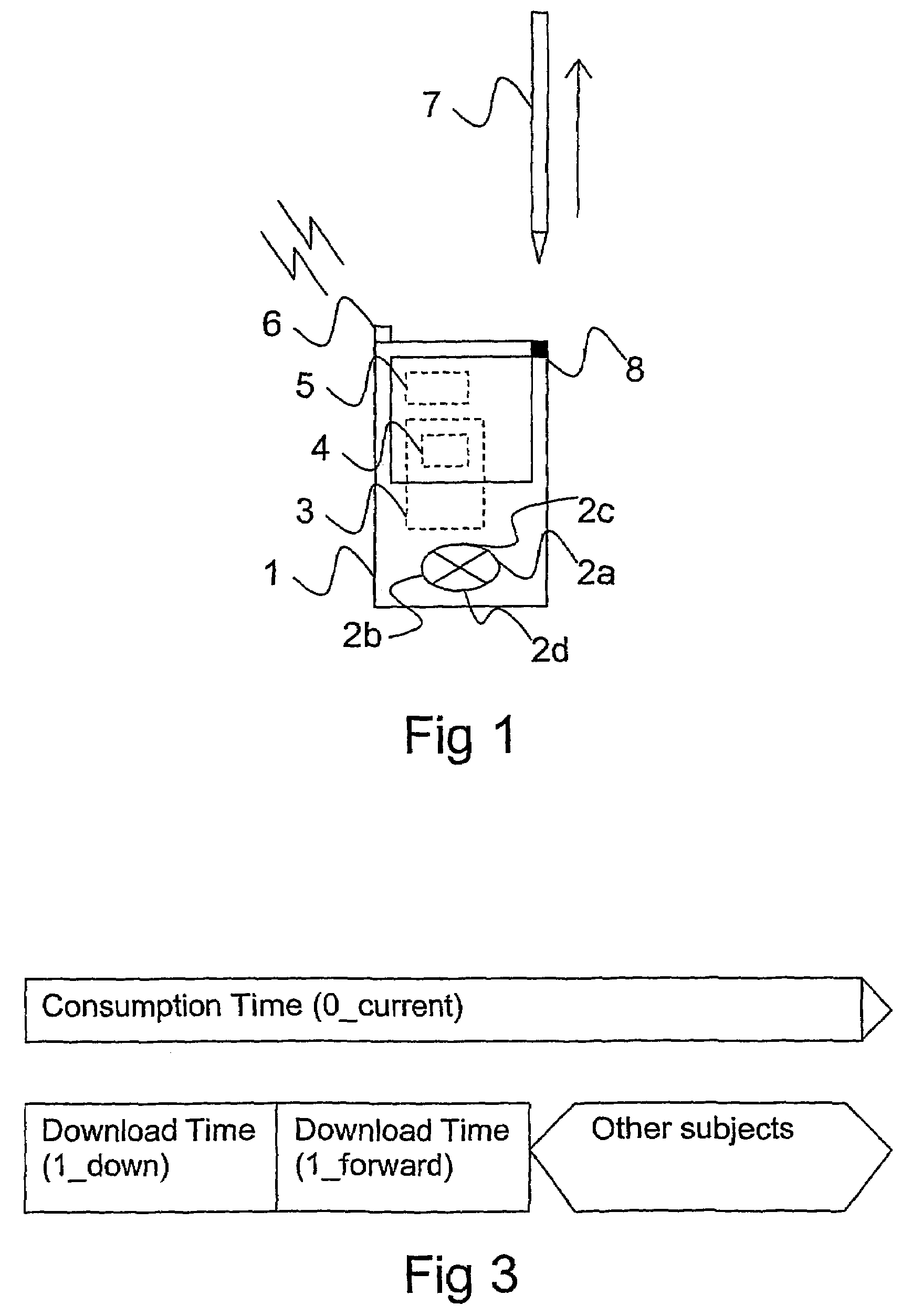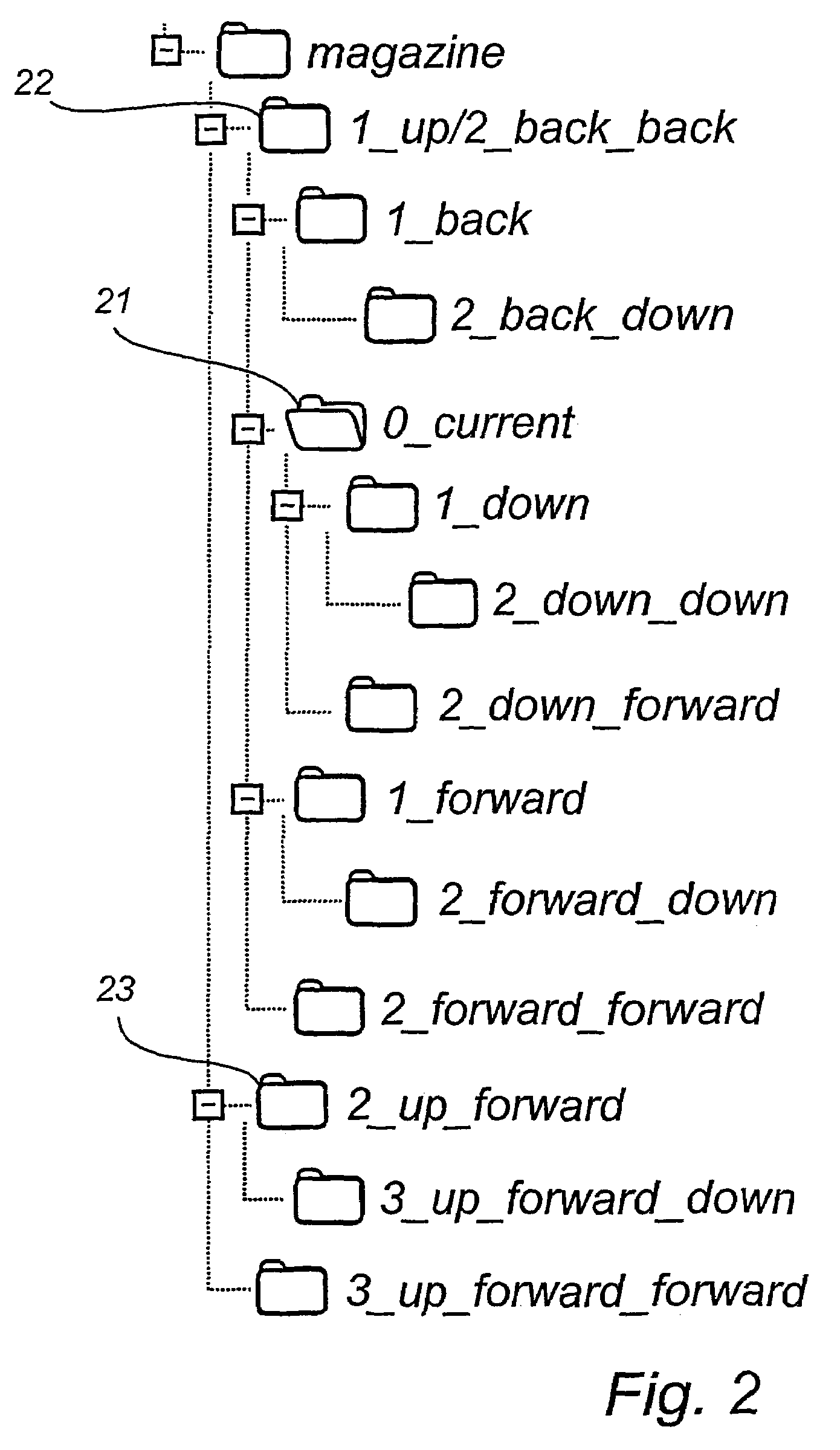Method for optimizing utilization of client capacity
a client capacity and optimization technology, applied in the field can solve the problems of more difficult prediction of user action and needing client capacity, and achieve the effect of optimizing client capacity utilization
- Summary
- Abstract
- Description
- Claims
- Application Information
AI Technical Summary
Benefits of technology
Problems solved by technology
Method used
Image
Examples
Embodiment Construction
[0039]The currently preferred embodiment is related to the concept of Mediabricks'™ magazines. This should not be regarded as a limitation to the scope of the appended claims, but only as an example of a situation where the present invention may be implemented successfully.
[0040]The client is assumed to be a handheld mobile communication device with media playback functionality, such as the PDA 1 illustrated in FIG. 1.
DEFINITIONS
[0041]In this description of the preferred embodiment, a few terms are given a special meaning:
[0042]1. Media subject—a piece of media contents, further organized in different layers. Each subject can have audio, video, images, text etc.
[0043]2. Magazine—a collection of media subjects, organized in a defined media package structure.
[0044]3. Current media subject—the subject in the package structure a user is currently consuming (reading, watching, listening to etc).
[0045]In order to provide a satisfying media experience, the user should be able to consume th...
PUM
 Login to View More
Login to View More Abstract
Description
Claims
Application Information
 Login to View More
Login to View More - R&D
- Intellectual Property
- Life Sciences
- Materials
- Tech Scout
- Unparalleled Data Quality
- Higher Quality Content
- 60% Fewer Hallucinations
Browse by: Latest US Patents, China's latest patents, Technical Efficacy Thesaurus, Application Domain, Technology Topic, Popular Technical Reports.
© 2025 PatSnap. All rights reserved.Legal|Privacy policy|Modern Slavery Act Transparency Statement|Sitemap|About US| Contact US: help@patsnap.com



